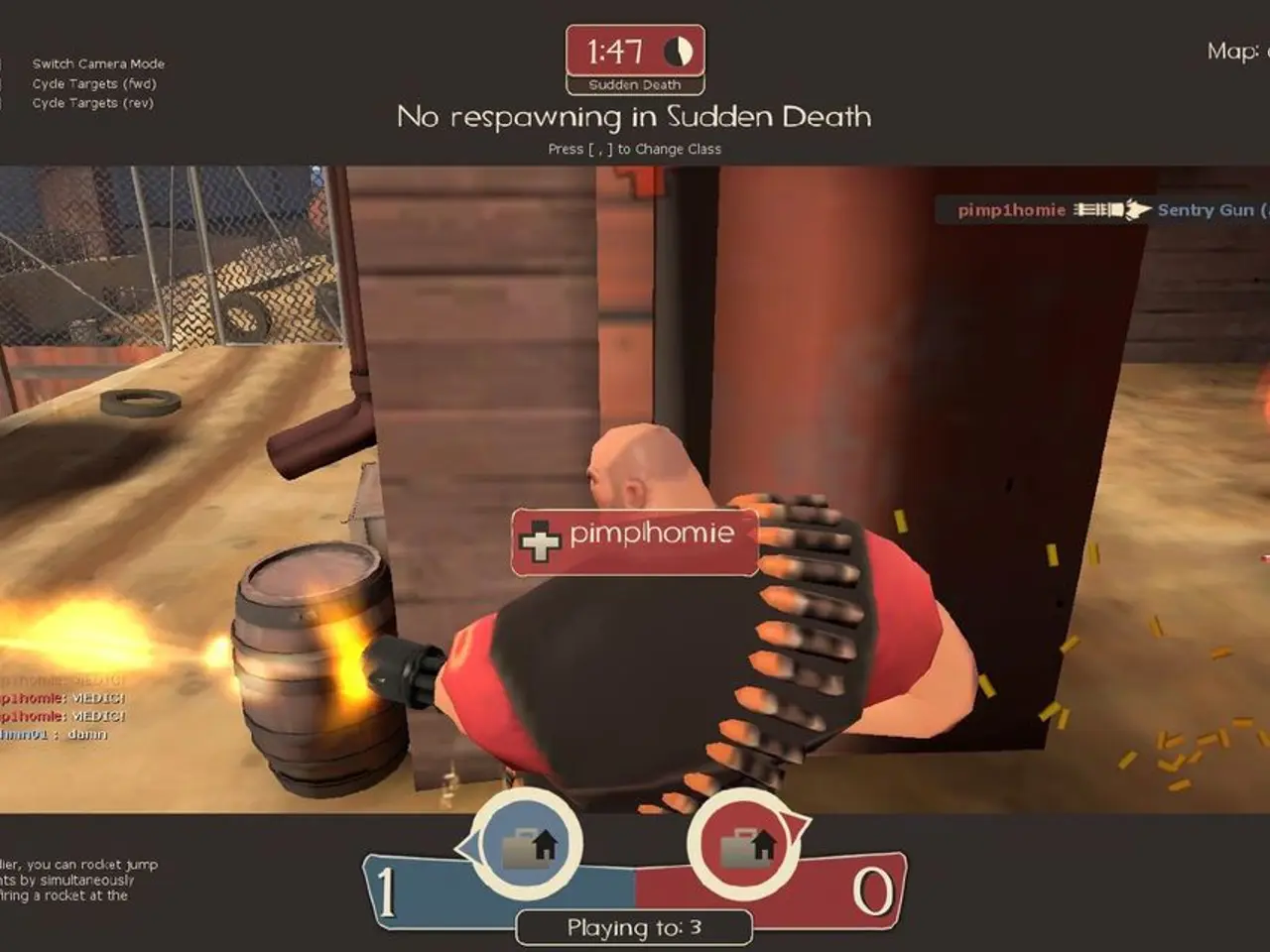Bank of Russia performs emergency evacuation drill involving three simulated casualties in Kamchatka region
In Petropavlovsk-Kamchatsky, Kamchatka Krai, the local branch of the Bank of Russia recently carried out an emergency drill simulating a fire on the second floor of their premises. The drill, designed to test the bank's readiness and response to such crises, was executed in collaboration with local fire and rescue units.
The scenario involved three bank employees becoming trapped in a heavily "smoked" area with no escape route. The rescuers, equipped with special rescue gear, had to navigate through the narrow corridors of the institution in conditions of almost zero visibility, thanks to smoke generators used during the drill to create realistic conditions.
One of the bank staff members lost consciousness during the evacuation, and a three-legged extendable ladder was used to evacuate the individual through a window. The branch's staff provided immediate first aid to the unconscious employee until medical personnel arrived.
The other two trapped employees were successfully rescued from the building using the same equipment and techniques. The actions of both the fire and rescue units and the bank staff were assessed as satisfactory.
Emergency drills such as this one are an essential part of broader health and safety practices mandated or strongly encouraged across the banking sector. Banks like NatWest Group require all employees to complete regular health and safety training, which includes fire safety procedures.
However, specific public data or reports on the frequency of actual fire evacuation or suppression drills specifically in bank branches are not readily available. It's worth noting that large financial authorities like the Bank of England conduct metaphorical "fire drills" for operational crises, but these drills typically simulate operational or default management crises rather than physical fires.
The drill in Petropavlovsk-Kamchatsky resulted in the activation of the alarm system, the evacuation of personnel and visitors, and a report to the fire department. The photo accompanying this article is of GU MCHS Russia Kamchatka Krai, who played a crucial role in the successful execution of the drill.
No further information about the condition of the "casualty" or the "victim" was provided in the article. Nonetheless, the drill served as a valuable reminder of the importance of preparedness in the face of emergencies and the effective collaboration between banks and emergency services in ensuring the safety of their employees and customers.
The emergency drill in Petropavlovsk-Kamchatsky tested not only the bank's readiness in the event of a fire but also the collaboration between the banking-and-insurance sector, specifically the local branch of the Bank of Russia, and fire and rescue units. The industry-wide health and safety practices, including fire safety procedures, are crucial for banks like NatWest Group, with employees required to complete regular training.




